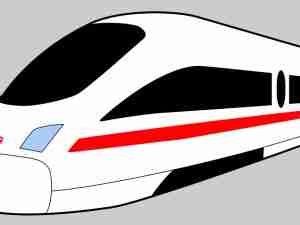Cargo containers were transported off the Howland Hook Marine Terminal on Staten Island by rail for the first time today, launching the facility's ship-to-rail cargo transfer facility. The reactivation of the Staten Island Railroad and the opening of Howland Hook's ExpressRail Staten Island facility will result in 330 new permanent jobs in the region and the removal of up to 100,000 trucks a year from the Goethals Bridge, and state and local roads.
The containers were unloaded from the Hapag Lloyd vessel Adrian and placed on rail cars destined for Cleveland and Columbus, Ohio; Detroit and Chicago.
Port Authority Chairman Anthony R. Coscia said, 'Introducing rail service at our port terminals is a critical part of our strategy for handling the continuous increases in cargo entering our port in a way that is both economically productive and environmentally responsible. Our $530 million portwide investment in on-dock rail will help us to meet the challenges of cargo growth while remaining good environmental stewards for years to come.'
Port Authority Executive Director Anthony E. Shorris said, 'Adding rail cargo capacity to Howland Hook allows us to square a circle - growing our port while helping the environment. In the nation's most densely populated urban area, getting 100,000 trucks a year off the road is very good news, especially when we can contribute more than $200 million per year to the region's economy at the same time.'
New York City Economic Development Corporation President Robert C. Lieber said, 'This important rail freight system will play a key role in the successful implementation of Mayor Bloomberg's PLANYC 2030 sustainability program. EDC is pleased to have played an integral part in making the rail service a reality by reactivating the Staten Island Railroad and the rehabilitating the Arthur Kill Lift Bridge.'
The $26 million ExpressRail Staten Island facility was built on a 39-acre parcel on the former Procter & Gamble site, which was purchased by the Port Authority in December 2000.
ExpressRail Staten Island consists of five tracks that are linked to the reactivated Staten Island Railroad. Containers are loaded onto rail cars and transported via the Staten Island Railroad to the Conrail Main Line in Elizabeth, N.J., which connects to the nation's extensive rail freight network.
The rail facility required the reactivation of the Staten Island Railroad. It also required the rehabilitation of the Arthur Kill Lift Bridge and the construction of a rail link from the bridge to the Chemical Coast line to allow cargo-laden trains access to the national rail freight network.
The ship-to-rail terminal has the capacity to handle up to 100,000 containers per year.
The Port Authority of New York and New Jersey operates many of the busiest and most important transportation links in the region. They include John F. Kennedy International, Newark Liberty International, LaGuardia and Teterboro airports; AirTrain JFK and AirTrain Newark; the George Washington Bridge and Bus Station; the Lincoln and Holland tunnels; the three bridges between Staten Island and New Jersey; the PATH (Port Authority Trans-Hudson) rapid-transit system; the Port Authority-Downtown Manhattan Heliport; Port Newark; the Elizabeth-Port Authority Marine Terminal; the Howland Hook Marine Terminal on Staten Island; the Brooklyn Piers/Red Hook Container Terminal; and the Port Authority Bus Terminal in midtown Manhattan. The agency also owns the 16-acre World Trade Center site in Lower Manhattan.
The Port Authority is financially self-supporting and receives no tax revenue from either state.







